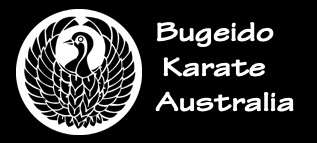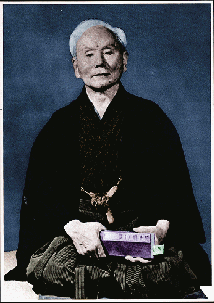Born in Okinawa, where the practise of martial arts is traditional, he began to study Okinawa-te at the age of eleven and became a pupil of Itosu Anko. In turn he himself became a teacher, and in 1902 he gave a demonstration to a number of men in authority in Kagoshima (Kyushu). From that time onwards he acquired a certain reputation, which grew. He was invited to Tokyo in 1917, and with the assistance of his pupils gave a demonstration of Karate. He went again in 1922, and became a close friend of Kano Jigoro. Then he decided to make his home in Japan and spread his art as widely as possible.
He wrote numerous articles on Karate, then published an important book, Karate-do Kyohan, which was later translated into other languages including English, in a modernized form. He decided at this time to change the meaning of the word Karate by substituting for the character KARA (‘Chinese’) the one meaning empty. His unceasing activity led to the creation of more than thirty Karate Dojo’s in Japan in 1936, as those found in universities and big institutions were private affairs. His activity eased off during the war, but afterwards began again under the aegis of the American authorities.
From then on Karate expanded rapidly. His son, Funakoshi Yoshitaka, who died in 1953, succeeded him as head of the main Dojo, the Shotokan.

